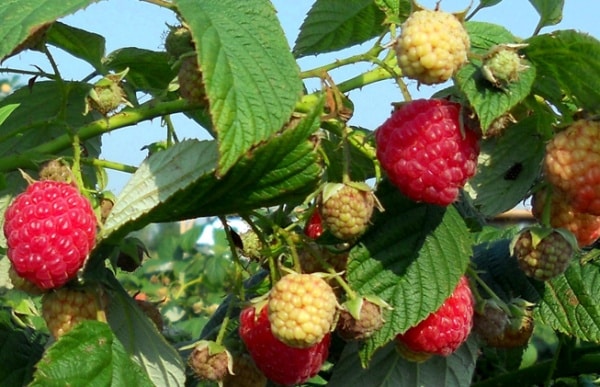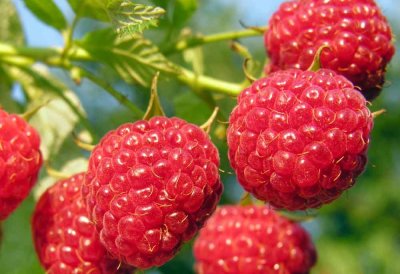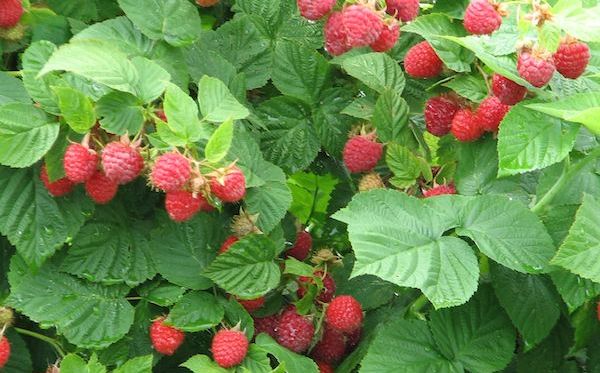Raspberry Cultivation Guide:

Introduction of Raspberry Cultivation:- Raspberries are delicious, nutritious edible fruits naturally inclined to grow in colder climatic zone, though they can be grown in most of the zones. Raspberries are cultivated for the fresh fruit market and for commercial processing into individually quick frozen fruit, puree, juice, or as dried fruit used in a variety of culinary products. Growing raspberries are fun and increasing in popularity. These fruits can be handpicked and will be matured soon after strawberries and just before blueberries. The full crop of raspberries can be expected from third year of planting and these trees are productive for 10 to 15 years. Raspberries belong to the family of “rose” and genus of “rubus”. Raspberries can be grown in pots, containers and backyards. One can expect decent profits proper gardening practices and farming methods. If the cultivation of raspberry is intended for commercial purpose, proper soil testing and other measures should be carried out. Raspberries are excellent source of nutrition and health benefits.
Health Benefits of Raspberry:- The following are some of the health benefits of Raspberry.

- Raspberries help in weight management.
- Raspberries help in reducing wrinkles.
- Raspberries prevent macular degeneration.
- Raspberries prevent infections and some type of cancers.
- Raspberries help in boosting immune power.
- Raspberries help in promoting feminine health.
- Raspberries are source of high nutrition value.
- Raspberries have anti-ageing properties.
- Raspberries are good for skin health.
Raspberry Varieties:- Basically there are ‘summer-bearers’ and ‘ever-bearer’ types of raspberries. Usually, summer-bearers bear one crop per season and that too in summertime where as ever-bearers bear 2 crops yearly, one in summer and one in fall. Some of the varieties grown across the globe are; summer red raspberries, Black raspberries, Ever-bearing red raspberries, Purple raspberries and Golden raspberries are main varieties of raspberries. Mysore Raspberries mostly cultivated in India.
Climate Required for Raspberry Cultivation:- Raspberries can be grown wide range of climatic conditions. However, they thrive best in cooler climates. Raspberries tolerate some shade, but grow best in full sun. Most raspberry verities still thrive best in regions with cool summers and mild winters.
Soil Requirement for Raspberry Cultivation:- Raspberry crop thrives best in rich soils from sandy loams to silt with good water-drainage. Avoid heavy clay soils with poor drainage as root rot will happen in few days. Raspberry plants prefer soil pH between 6.0 and 7.0 for best yield and quality. Soils with acidic property should be corrected by adding lime to the soil. Based on the soil test results, micro-nutrient deficiencies should be filled. To make soil rich, appropriate organic matter should be supplemented as part of the land preparation.
Season for Raspberry Cultivation:- Usually, raspberry seedlings grown in nursery containers should be planted after the frost conditions are vanished. These seedlings should be planted 1 inch deeper than they grown in nursery.
Land Preparation in Raspberry Cultivation:- Preparation of the site plays most important role in raspberry cultivation. Soil drainage is very important in raspberry cultivation. A good supply of organic compost in the top-soil and deep, well-drained subsoil are both highly desirable in raspberry cultivation. It is not recommended to grow raspberries in an area in which tomatoes, potatoes, brinjal, any kind of peppers, or other crops susceptible to verticillium wilt had been grown in the past 2 to 3 years. As part of land preparation, make sure to eliminate any weeds from previous crops prior to the plantation of raspberry. Give couple of ploughings to make the soil pulverized.
Propagation, Planting in Raspberry Cultivation:- Generally, raspberry pants are propagated by the suckers that develop from the roots. These plant root divisions are separated by digging with a sharp spade and separating by hand. It’s best to purchase certified disease-free raspberry seedlings from a well-known nursery. Traditionally, raspberry plants have been sold as fairly large bare-root plants. One year old seedling of raspberry nursery or container plant can be transplanted in the field when stem length is about 20 to 30 cm. usually; plant spacing followed in raspberry cultivation is 60 cm in a row and 2.75 m aisle. Generally, it takes 15 to 18 stems per meter.
Irrigation in Raspberry Cultivation:- Well, irrigation depends on the soil type and weather conditions. However, raspberry crop requires frequent irrigation in drought regions. If the weekly rain-fall is less than 1 inch, it requires providing enough irrigation. Usually, raspberry requires irrigation once in a week. Make sure to provide enough irrigation after harvest of the crop. In case of water problem, one can use the drip irrigation. There are some schemes from local government providing subsidies on drip and sprinkler irrigation. For complete information about drip or sprinkler system, contact local horticulture department or any agriculture university.
Manures and Fertilizers in Raspberry Cultivation:- Raspberry crop responds well to organic manures and fertilizers. Proper annual application of fertilizers should be carried for better growth of the plants. Each year, apply a total of 60 to 90 grams of ‘N’ per 10 feet of row. Apply 1/3rd of the total when new primocanes start growing, 1/3rd at the end of May and 1/3rd at the end of June. Broadcasting method should be followed to apply the fertilizers. Light irrigation is required right after fertilizer application in the soil. Any nutrient deficiencies should be filled based on the result of soil test. Adding ample amount of organic manure at the time of land preparation will result in good yield.
Intercultural Operations in Raspberry Cultivation:– Shallow cultivation is required to control weeds and primocanes that develop between hills and in the row aisles. Cultivate no deeper than 1 to 1.5 inches to prevent root damage. Mulching is also helpful for retaining moisture and controlling the weed growth. Don’t top primocanes during the growing season. Old, dead floricanes should be removed in late summer or fall. Prune out the floricanes after picking all the fruits from the plant.
Diseases and Insects in Raspberry Cultivation:- Raspberry crop is more vulnerable to many insect pests and diseases. These drastically effect the plant growth and crop yield. The common pests and diseases found in raspberry cultivation are; root weevils, leaf-roller larvae, spider mites, aphids, powdery mildew, anthracnose, verticillium wilt, and phytophthora root rot. For symptoms and control measures of these, contact your local horticulture department or any agriculture university.
Note: Contact your local horticulture / agriculture department or any agriculture university research center for above mentioned diseases and their control. They are the best source for finding the symptoms of diseases and their control.
Harvest in Raspberry Cultivation:- As the raspberry fruits are highly perishable, harvesting on time is most important and the post harvest of the fruits will determine the shelf life. The raspberry fruits can be harvested daily. Approximately 60 to 65 % of the fruits can be marketed as fresh fruit; the 35 to 40 % will be marketed as frozen fruit.

Yield in Raspberry Cultivation:- Yield of the crop depends on various factors like soil type, cultivar (variety) and orchard management practices. On an average 3 to 4 kg/ 60 linear cm can be obtained from second year crop.
Marketing of Raspberres:- As a fresh produce, one can transport to local markets and in other forms like puree and frozen can be exported to international markets.
For Strawberry Farming : Read here.
For Asia Farming : Read here.
For Sheep or Goat Farming Guide: Read here.
It’s very helpful to me. Many many thanks for providing such beneficial information. Please inform me how can I get Nuzivid mango plant .Which mangoes weighs 3 kg.
There are many and huge nurseries in Kadiyam of East Goadavari district. There you can get most of the mango varieties.
This is a really good info on the plant. I would like to know some other details like:
1) Size/ Height of the plant.
2) Ideal temperature range.
3) Can this be grown hydroponically?.
Raspberry trees can reach up to a height of 36 to 60 inches tall with a 24 to 36 inch spread (width). And the ideal temperature for growing Raspberry is about 25 to 30°C.
Where can I get Mysore raspberry plants or seeds
Thank you….the information is very helpful
Hi there! I’m so glad I found this website, how and where do I purchase the raspberry plants?